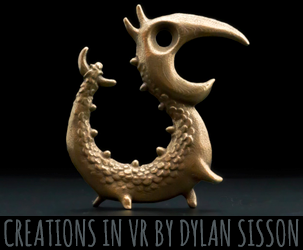


Encanto: Seeking Beauty in Truth
By Maria Elena Gutierrez
In Encanto, the Disney animated musical feature directed by Byron Howard and Jared Bush, with co-director Charise Castro Smith, members of a multi-generational family embark on a spiritual journey that leads them to a greater understanding of themselves and their loved ones. Their Virgilian guide on this journey of self-discovery is Mirabel, the only member of the Madrigal family who lacks a magical gift. As Mirabel explores the depths of the Casita, the enchanted house in which they all live, she discovers hidden truths that change the Madrigals forever, and help them to re-forge bonds that have long been broken.
More than anything else, Encanto is a film about perception/sight. It invites us to look at the world through fresh eyes — through the eyes of Mirabel. She is the lens through which we watch the story unfold, a lens which also enables the other characters to see themselves, to revisit their relationships with each other and, ultimately, to reconnect.
Mirabel is able to take on this role because she is different from the rest of the family, the only one without a special talent — or so everyone believes. Her isolation and loneliness is clearly established at the beginning of the film when she sings about her feelings of being excluded. However, her outsider status gives her a privileged perspective, enabling her to see truths that are hidden from others. It is this uncomfortable reality — the reality of the outsider — that the filmmakers are inviting us to share. Why? Because experiencing life as the underdog teaches us empathy.
When the magic starts to fail and the Casita begins to collapse, Mirabel embarks on a quest to discover what is wrong with the magic. This journey is at the same time her own journey of self-discovery, a Socratic quest to know herself. This is the most difficult journey of all, symbolized by the physical and emotional trials she endures along the way. Only at the end of the film does she achieve her goal, when she receives the gift of a doorknob that not only admits the entire family to the new rebuilt Casita, but which shows Mirabel her own reflection. Mirabel’s gift is sight and her doorknob is a mirror, and by looking into it, she finally sees all of herself, her true self.
Mirabel’s very name echoes this universal quest for truth through sight — the Latin word ‘mirabilis’ originally meant “something that has to be watched, something worth watching” - and ‘mira!’ in Spanish has fully maintained this meaning. But ‘mirabilis’ also came to mean ‘wonderful’ or ‘beautiful’ and, as John Keats observed, beauty and truth are themselves mirror images. Even Mirabel’s physical appearance picks up this theme — she wears glasses, drawing our attention to her role as an observer and her ability to see not only everyday truths in a magical world, but also wonder in everyday things. Is this not the root of magical realism, the school of literature that was such an inspiration to the filmmakers?
If, like Mirabel, we wish to truly know ourselves, we have to dig deep beneath the surface of what we think we know. The process is often painful, and can be heart-breaking to watch. For example, when strong-armed Luisa sings to Mirabel about the pressure of being perfect, we feel her pain. Indeed, Luisa’s obsession with strength and perfection is shared by the whole family, and offers a timely commentary on today’s Instagram culture, where so much emphasis is placed on snapshots, soundbites and superficial appearances.
Nowhere is this commentary more evident than in The Family Madrigal, the opening song of Encanto. When Mirabel introduces each member of the family, she packages them into convenient summaries of themselves, as defined by their magical gifts. They as characters — and we as the audience — spend the rest of the movie unwrapping those packages to see the truths that lie within. These exposed truths show us that reality is complex and full of imperfections. Beautiful
While characters like Luisa and Isabela wrestle with the challenges brought by their gifts, we as a audience engage closely with
Mirabel’s odyssey also evokes Joseph Campbell’s classic hero’s journey. In order to reach her uncle Bruno’s room in the Casita’s hidden tower, she must climb a monumental staircase and throw herself across a perilous chasm, just like a Greek hero — or Indiana Jones! The concept of a magical house filled with secret passages and hidden spaces evokes countless stories for children, from the Narnia books of C.S. Lewis to Neil Gaiman’s Coraline. By framing Mirabel’s rite of passage with familiar elements from mythology and literature, the filmmakers ensure that Encanto is a timeless and universal tale that we can all relate to.
Bruno’s magical talent is the power of prophecy. But his gift is also a curse — when he presents visions of a dark future, the family turns its back on him. So Bruno is another outsider. However, whereas Mirabel is isolated because she has no gift, Bruno has been rejected because his own gift is deemed unacceptable. Bruno also represents art, in the sense that he is a performer. By explaining that he has many characters, he opens Mirabel’s mind — and the minds of the audience — to the idea that everyone has many characters. It brings us to a deeper understanding about ourselves — isn’t subjectivity performative?
As a performer, Bruno reminds us of the way in which Mirabel presents the members of the family at the beginning of the film. The Family Madrigal spotlights each character just as if they were on stage, setting up a theatrical quality that permeates all aspects of Encanto, from the intricate choreography to the Casita itself, with its windows that open on cue and which frame our views of what is happening in and around the house. Like a proscenium arch in a theatre, the windows are membranes through which the audience connects with the drama — they also express the degree to which the house is connected to the world around it. The living room space is open to the sky — in a very real sense, there is no inside and out. The power of the theatrical approach is clearly important to the directors — when asked for his advice to young aspiring filmmakers, Jared Bush recommended that they ‘put themselves on stage.’
By definition, all actors embrace ambiguity, and the space Bruno inhabits reflects this. His secret room is many places at once, it defies definition. It could be the space of magic, adventure, creativity itself. When Dolores sings We Don’t Talk About Bruno, she says: “I associate him with the sound of falling sand.” When we think of Bruno, we think of fluidity and lack of form, and the inevitable passage of time.
Bruno offers yet another unique perspective on the extraordinary world of Encanto. His room lies on the other side of the wall from the kitchen. By peering at this warm, family-focused space through a tiny crack in the wall, we the audience become aware of our own gaze. There are echoes here of the Nouvelle Vague tradition of filmmaking, not quite breaking the fourth wall but gently reminding the audience that this is cinema, and that at the heart of cinema lies the human gaze. Yet again, the filmmakers are inviting us to see things from a different perspective. To see the truth.
Mirabel’s grandmother, Abuela Alma, is Bruno’s exact opposite. Where Bruno embraces uncertainty, Abuela is clear about everything she does. She is a perfectionist. She was not always like this but, over the years since the creation of the Encanto, she has become so focused on the magical gifts of her family that she has forgotten what the magic really means. She has lost her path chasing the chimera of success, distracted by routine and empty discourses. She has lost her soul.
Abuela’s present-day obsession with perfection and success, rooted in her original status as a refugee, encourage us to read Encanto as a metaphor for the American dream. Fleeing from the soldiers who killed her husband, she crosses a river — but it might as well be the Atlantic Ocean. Inside the Statue of Liberty is a bronze plaque bearing a poem by Emma Lazarus: “Give me your tired, your poor,” it reads. These lines could easily refer to the young Abuela as she stands huddled on the river bank with her three children, and the Casita that grows before her could just as easily be the wondrous promised land of the United States. Is it a coincidence that the film is set in Colombia, when the New World once went by the name ‘Columbia?’ Surely not.
As for the other characters, they all have their parts to play, and each represents an archetype — the strong one, the pretty one, the worrier. This is where the Instagram simplicity of their initial appearance gains power, because these archetypes are universal. This universality is yet another reason the story and messages of Encanto are accessible to all. We recognize them, and are immediately drawn in.
As powerful as each individual character is, the story of Encanto also emphasizes
Encanto is filled with powerful symbolism. Most prominent of all is the image of the candle, the visual expression of the magic that is gifted to Abuela and her family. The film opens on a black screen, and it is the light of the candle that illuminates everything that is to come. The candle itself carries the image of a butterfly — a polysemic visual metaphor that recurs throughout the story, both literally with the butterflies that surround Mirabel, and figuratively with the butterfly-shaped bows in the young Abuela’s hair.
The butterfly can be seen as a symbol of hope, transformation and rebirth. It is worth remembering, too, that the goddess Psyche was represented as a butterfly. Hope is also expressed by the careful use of the color green — this is the color of Mirabel’s room, her door, Bruno’s cape, and of course the magical forest that lies inside Antonio’s room.
Encanto may seem like a simple story, but it contains many layers of meaning, hidden inside its clever narrative structure. At the beginning of the movie, we are presented with everything we need to know in order to peel back those layers, in a moving flashback that sets up Abuela’s story. This flashback consciously uses imagery that is repeated at the end of the film. For example, when Abuela first greets the Casita, she waves at the house. When the new house is finally completed, it is Mirabel is standing before it. “Hola, Casita,” she says, and repeats her grandmother’s wave. The story is the same, but the perspective has changed.
Integral to the storytelling is the music. The soundtrack is big and theatrical — almost a Broadway show. Lin-Manuel Miranda’s songs create a cultural specificity that roots the movie firmly in Colombia, that melting pot of Latin-American cultures. Each character has a different song and each song has a different musical style — reggaeton for Luisa, rock en español for Isabela and Bambuco for Mirabel. This variety supports the underlying themes of plurality, of looking beyond easy answers and superficial truths and seeking a more complex and vibrant reality.
Music leads naturally to movement and, like all Colombians, the Madrigals are devoted to dance. Indeed, for Latin-American people everywhere, dancing is almost more important than speaking! The skill of the Disney animators, and the delicacy of the tools they now have at their disposal, allow them to express not only the sensuality of dance, but also the depths of emotion required to tell such a layered and sophisticated story. Body language and facial expressions are subtle, powerful, appropriate, true — everything that is needed for the audience to connect emotionally with the characters.
I truly believe that Encanto is a timeless masterpiece. What is more, it has reached our screens at exactly the right time. We have all been locked up in our own small worlds through the global pandemic. Now we are slowly learning to reconnect, to see ourselves with fresh eyes, and to reassess our relationships with others. At the same time we have been battling against authoritarian political movements — not least right wing anti-immigration propaganda — and the literal building of walls and closing of borders. In a very real way, we have all become outsiders.
Yet, like Mirabel, we now have an opportunity to use the outsider’s perspective to see things differently. When the dream is broken, the best way to rebuild it is through ‘perspective and understanding,’ to use the words of Byron Howard — something we achieve not through magical gifts but by being ourselves. When we neglect ourselves and each other, when we lose our spirituality, that is when the cracks form in our houses. But we can repair them if we see each other, and care for each other. We all have something important to give to the community, talent or not. Beauty lies not in perfection, but in truth. This is what the Madrigals learned, and we can learn it too. The true miracle is us.
Dr. Maria Elena Gutierrez is the CEO and executive director of VIEW Conference, Italy’s premier annual digital media conference. She holds a Ph.D. from Stanford University and a B.A. from the University of California Santa Cruz. VIEW Conference is committed to bringing a diversity of voices to the forefront in animation, visual effects, and games. For more information about VIEW Conference 2022 program of events, visit our website:
































